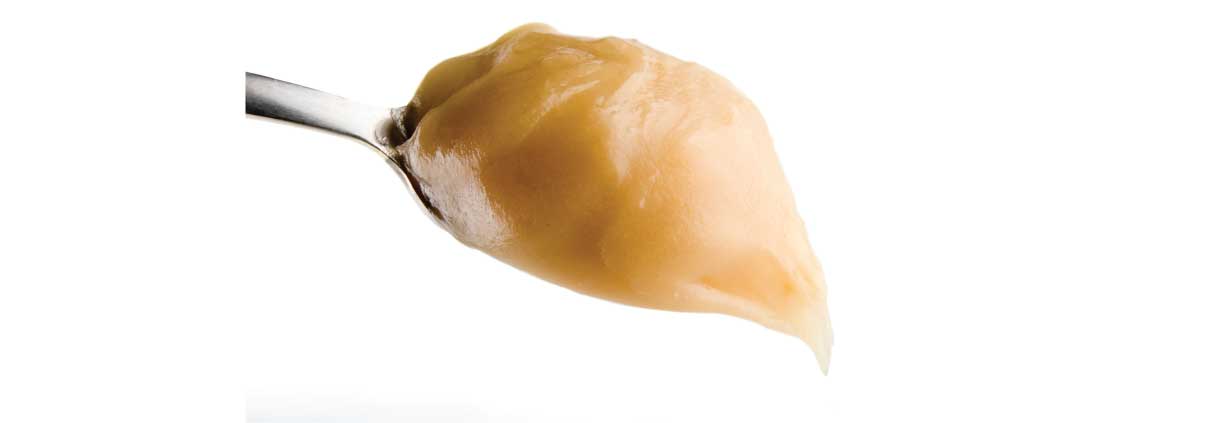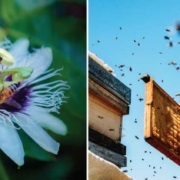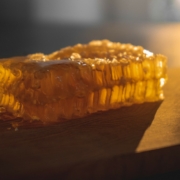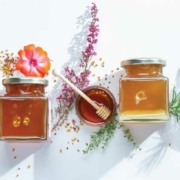Creamed Honey, the Velvety Kitchen Wizardry that Stirred up a Question.
Reading time: 2 minutes
Creamed honey, with a velvety smooth, spreadable consistency, is the shelf-stable product of a bit of kitchen wizardry. It’s not commonly used for mead-making but is as fermentable as in its original raw honey form. So, if you fancy a tasty and crafty spread, creamed honey might be just the right treat …alongside your glass of mead.
A Velvety Delight in the Kitchen
Creamed honey and mead making: a Curious Connection
In the sweet world of mead-making, we get questions about not just mead but honey as well. Two interesting, related questions are: can you make mead from creamed honey? and what is “Creamed honey” anyway? Have you ever wondered about the velvety magic of creamed honey or if it could make a tantalizing mead?
First, I wouldn’t make mead from creamed honey unless I ran a little short, but you certainly can. It will ferment just like its raw counterpart. Now, onto creamed honey. It is truly a delight! It feels like a velvet caress and tastes like heaven, but what exactly is it? It’s 100% pure nature honey that has undergone a very controlled crystallization process. Contrary to what the name would infer, no dairy is involved in the process. Creamed simply describes the luxurious texture of the honey. Occasionally, this happens naturally, but more often than not, it is initiated.
Exploring the Origins of Creamed Honey
The Dyce Method: A Revolutionary Technique
The process for creamed honey was patented in 1935 by Professor Elton Dyce of Cornell University. He heat-pasteurized raw honey, then cooled and seeded the honey with micro-crystals. This was all done at precise temperatures and started the crystallization process. His method is still used for commercial honey creaming, cleverly called the “Dyce Method.”
DIY Creamed Honey: A Simple Guide
Creamed Honey vs. Whipped Honey
A simpler, more DIY approach commonly used now is to introduce micro-crystals into room-temperature liquid honey. The seed honey can be purchased or created by grinding honey crystals with a mortar and pestle until creamy. The only real trick is to ensure the honey is cool so the crystals don’t melt in the increased temperature created by friction. Once stirred into the room-temperature liquid honey, these crystals will begin to replicate themselves, and when the crystallization process is complete, you’ll have a jar of delicious, creamed honey. How long this process takes is dependent on the temperature and ratio of liquid honey to seed crystals. 10:1 is a good average. It’s important to note that if creamed honey is heated, it will return to its liquid state and must be reseeded to return to its creamed state. Creamed honey made in this way maintains all the nutrients and goodness of the raw honey from which it was made.
Creamed honey is shelf-stable, and the crystal structure will remain over time, maintaining its silky, delicious form. Once creamed, honey is more solid, thus easier to spread without drips.
Whipped Honey
Another variation on this theme is “Whipped” honey. To whip honey, add partially crystalized honey to a mixer and allow the beaters to grind the honey into fine, creamy crystals. Pour it into a jar and wait a short while and Voila! silky, delicious honey. Crystals will continue to form, but the new crystals will replicate at a much smaller size.
Give one of these methods a try if you’re curious. It’s delicious science!





